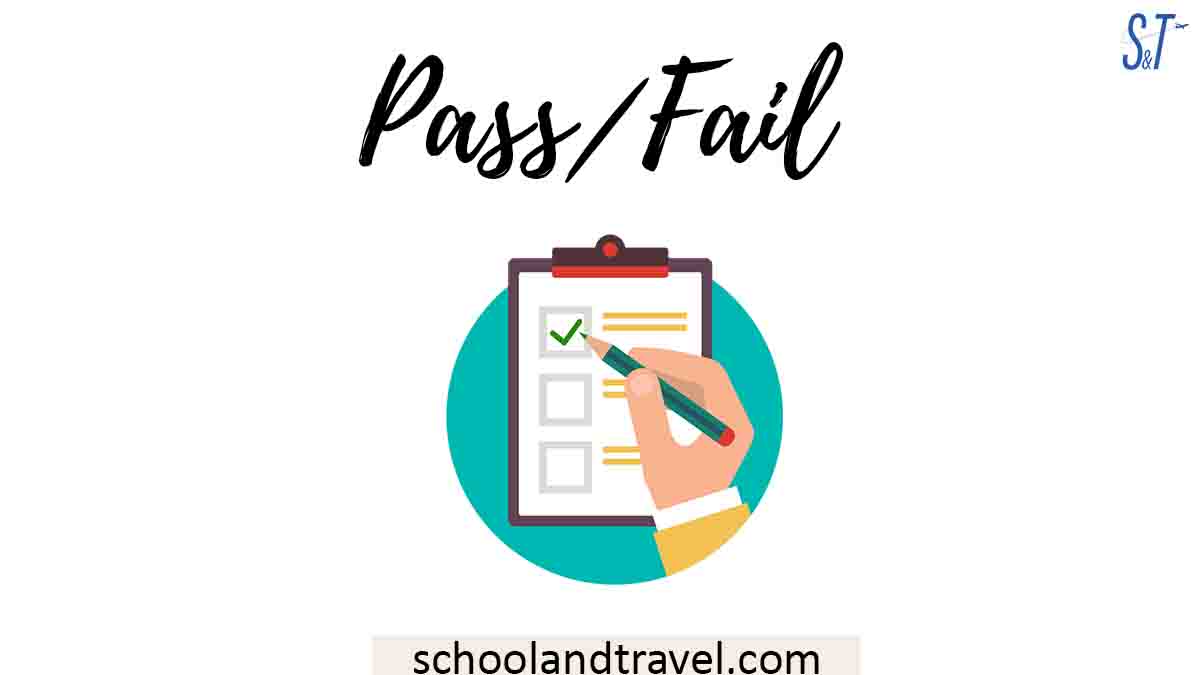General information opens the world to kids and helps them understand and connect with their surroundings in fun and meaningful ways.
This article dives into the top General Knowledge Questions and Answers for Kids.
General Knowledge for Kids on Animals
| S.No | Animal | Cool Fact |
|---|---|---|
| 1. | Dog | Dogs have a unique nose print, just like humans have fingerprints! |
| 2. | Cat | Cats can make over 100 different sounds. |
| 3. | Goldfish | A goldfish has a memory span of about three seconds. |
| 4. | Butterfly | Butterflies taste with their feet. |
| 5. | Elephant | Elephants can’t jump. |
| 6. | Penguin | Penguins laugh when they’re tickled! |
| 7. | Owl | Owls can’t move their eyeballs side to side; they turn their whole head. |
| 8. | Kangaroo | Kangaroos use their tails for balance. |
| 9. | Giraffe | Giraffes have blue tongues. |
| 10. | Snail | Snails have thousands of tiny teeth. |
| 11. | Dolphin | Dolphins sleep with one eye open. |
| 12. | Cheetah | Cheetahs can’t roar but they can purr. |
| 13. | Koala | Koalas sleep for about 20 hours a day. |
| 14. | Frog | Frogs breathe through their skin. |
| 15. | Shark | Sharks have been around longer than dinosaurs. |
| 16. | Bat | Bats sleep hanging upside down. |
| 17. | Zebra | Every zebra has a unique stripe pattern. |
| 18. | Turtle | Turtles can live both in water and on land. |
| 19. | Honeybee | Honeybees dance to communicate with each other. |
| 20. | Chameleon | Chameleons change color based on their mood. |
General Knowledge for Kids on Riddles and Jokes
| S.No | Riddle or Joke | Answer or Punchline |
|---|---|---|
| 1. | Why did the math book look sad? | Because it had too many problems. |
| 2. | What comes once in a minute, twice in a moment, but never in a thousand years? | The letter ‘M’. |
| 3. | Why don’t scientists trust atoms? | Because they make up everything. |
| 4. | What has keys but can’t open locks? | A piano. |
| 5. | Why was the belt arrested? | For holding up pants! |
| 6. | What gets wetter as it dries? | A towel. |
| 7. | Why was the computer cold? | It left its Windows open. |
| 8. | What comes down but never goes up? | Rain. |
| 9. | Why was the math book happy? | Because it finally figured things out! |
| 10. | What has a head, a tail, but no body? | A coin. |
| 11. | Why did the scarecrow win an award? | Because he was outstanding in his field. |
| 12. | What’s orange and sounds like a parrot? | A carrot. |
| 13. | Why did the bicycle stand on its own? | It was two-tired. |
| 14. | How do you organize a space party? | You planet. |
| 15. | Why can’t you give Elsa a balloon? | Because she will let it go. |
| 16. | What is full of holes but can still hold water? | A sponge. |
| 17. | What do you call fake spaghetti? | An “Impasta”! |
| 18. | Why did the student eat his homework? | Because the teacher told him it was a piece of cake! |
| 19. | How does a snowman get to work? | By icicle. |
| 20. | What has an endless supply of letters? | A mailbox. |
General Knowledge Facts for Kids in School

| S.No | Fact Topic | Cool Information |
|---|---|---|
| 1. | First Day of School | In many countries, kids start school in September. |
| 2. | School Buses | In the U.S., most school buses are bright yellow for safety reasons. |
| 3. | World’s Oldest School | The King’s School in Canterbury, England, founded in 597 AD. |
| 4. | Homework Origins | The idea of homework began in ancient Rome. |
| 5. | World’s Smallest School | The single classroom of the “School on the Alp” in Switzerland. |
| 6. | Pencils | A standard pencil can draw a line that is 35 miles long. |
| 7. | School in Different Cultures | In Japan, students clean their classrooms as part of their daily routine. |
| 8. | School Duration | Finnish students have the shortest school year, only 190 days. |
| 9. | First Public School | Boston Latin School in the U.S. is the oldest public school (1635). |
| 10. | School Lunches | In France, school lunches often include a cheese course. |
| 11. | Class Size | In China, some classrooms have over 50 students in one room. |
| 12. | Summer Vacations | Summer vacations started in the U.S. to give kids time to help on farms. |
| 13. | First Kindergarten | Kindergarten started in Germany in 1837. |
| 14. | School Uniforms | The idea of school uniforms began in England in the 16th century. |
| 15. | Oldest University | University of al-Qarawiyyin in Morocco, founded in 859 AD. |
| 16. | Importance of Play | Playtime is crucial; it helps kids learn social skills and imagination. |
| 17. | Braille | Braille is a writing system used by the blind, invented by Louis Braille. |
| 18. | Libraries | The Library of Alexandria was one of the largest libraries of the ancient world. |
| 19. | Learning Languages | Children can learn languages easier than adults due to their flexible brains. |
| 20. | School Subjects | The core subjects in most schools are math, science, history, and language arts. |
General Knowledge Facts for Kids on Toys
| S.No | Toy Name | Fun Fact |
|---|---|---|
| 1. | LEGO | The name “LEGO” is derived from the Danish words “leg godt,” meaning “play well.” |
| 2. | Teddy Bear | Teddy bears were named after U.S. President Theodore “Teddy” Roosevelt after he refused to shoot a bear cub. |
| 3. | Barbie Doll | The first Barbie doll was introduced in 1959 by Mattel, Inc. |
| 4. | Yo-Yo | The yo-yo is considered one of the oldest toys, with some found in ancient Greece from 500 BC. |
| 5. | Rubik’s Cube | The Rubik’s Cube, a famous 3D puzzle, was invented in 1974 by Ernő Rubik, a Hungarian architect. |
| 6. | Play-Doh | Originally, Play-Doh was designed as a wallpaper cleaner. |
| 7. | Slinky | The slinky toy was accidentally created by an engineer trying to improve factory equipment. |
| 8. | Frisbee | The frisbee was originally a pie plate that students threw around at Yale University. |
| 9. | Hula Hoop | Hula hoops have been around for centuries and were first used by ancient Greeks. |
| 10. | Monopoly | The Monopoly board game was first released in 1935 and was inspired by real streets in Atlantic City, NJ. |
| 11. | Etch A Sketch | The Etch A Sketch, which uses a powder and stylus system, was introduced in the 1960s. |
| 12. | Hot Wheels | The first line of Hot Wheels cars was introduced in 1968. |
| 13. | Mr. Potato Head | Mr. Potato Head was the first toy to be advertised on television in 1952. |
| 14. | Cabbage Patch Kids | These dolls were one of the most popular toys during the 1980s. |
| 15. | Matchbox Cars | Matchbox cars got their name because the original toy cars were sold in boxes similar in size to a matchbox. |
| 16. | Silly Putty | Silly Putty was originally invented during World War II as a potential replacement for rubber. |
| 17. | Super Soaker | The Super Soaker water gun was originally called the “Power Drencher” when it was introduced in 1990. |
| 18. | Tamagotchi | Tamagotchis are virtual pets that were first released in Japan in 1996. |
| 19. | Jigsaw Puzzles | Jigsaw puzzles were originally called “dissected maps” and were used to teach geography. |
| 20. | Tinkertoy | Tinkertoy construction sets, introduced in 1914, were inspired by children playing with pencils and empty spools of thread. |
General Knowledge Facts for Kids on Reading
| S.No | Reading Topic | Fun Fact |
|---|---|---|
| 1. | Reading Aloud | Reading out loud can help improve memory and understanding of the text. |
| 2. | Earliest Books | The world’s earliest known books come from ancient civilizations like the Egyptians, who wrote on papyrus scrolls. |
| 3. | E-books | Electronic books or e-books can be read on devices like tablets or e-readers. They were first introduced in the 1970s. |
| 4. | Libraries | The Library of Alexandria in ancient Egypt was one of the largest and most famous libraries of the ancient world. |
| 5. | Fiction vs. Non-Fiction | Fiction books tell made-up stories, while non-fiction books provide real information about various topics. |
| 6. | Braille | Braille is a special reading system using raised dots, designed for people who are blind or visually impaired. |
| 7. | Comics | Comics combine pictures and words to tell a story. The first recognized comic book, “Famous Funnies”, came out in the 1930s. |
| 8. | Fairy Tales | Fairy tales are old stories that have been passed down through generations, often teaching moral lessons. |
| 9. | Reading Speed | On average, an adult reads about 200-250 words per minute. Kids, when they first start, read slower but get faster with practice. |
| 10. | Audiobooks | Audiobooks are recorded readings of books. They’ve been around since the 1930s, helping those who prefer listening over reading. |
| 11. | Bookworm | The term ‘bookworm’ refers to someone who loves reading. But originally, it referred to insects that fed on books! |
| 12. | Novels | The word ‘novel’ comes from the Latin word ‘novellus’, meaning new. Novels are long fictional stories. |
| 13. | Poetry | Poetry is a form of writing where feelings, ideas, and stories are expressed in verses and often rhyme. |
| 14. | Reading Benefits | Reading regularly can boost brain power, improve vocabulary, and even help you sleep better! |
| 15. | Book Covers | The cover of a book not only provides a visual hint of the book’s content but also protects its pages. |
| 16. | Alphabet | The alphabet we use in English has 26 letters, but some languages have more or fewer letters. |
| 17. | Picture Books | Picture books mainly use illustrations to tell a story, making them perfect for young readers. |
| 18. | Book Festivals | Many places around the world hold festivals celebrating books and reading. The Hay Festival in the UK is one of the most famous. |
| 19. | Book Genres | Books come in many genres, like mystery, fantasy, and romance, to cater to different tastes and interests. |
| 20. | Oldest Surviving Book | The “Diamond Sutra”, a Buddhist scripture, is the world’s oldest known printed book from AD 868. |
General Knowledge Facts for Kids on Cell Phones
| S.No | Cell Phone Topic | Fun Fact |
|---|---|---|
| 1. | First Cell Phone | The first cell phone was introduced in 1973 by Motorola and was called the DynaTAC 8000x. It was big and heavy! |
| 2. | SMS | SMS stands for Short Message Service. It’s the technical name for a text message. |
| 3. | Smartphone | Smartphones are cell phones that can run apps, access the internet, and take photos and videos. |
| 4. | Touch Screen | Modern smartphones use touch screens. This technology was first developed in the 1960s, but it became popular in the 2000s. |
| 5. | Cell Phone Towers | Cell phones connect to networks using cell towers. These towers pass signals between phones and the network. |
| 6. | Battery Life | The first cell phones needed to be charged every few hours, but today’s phones can last days on a single charge. |
| 7. | App Store | An app store is a place on your phone where you can download and install new applications or games. |
| 8. | Ringtones | Ringtones are sounds that phones make when they receive a call. Early cell phones had very simple tones, but now they can play entire songs. |
| 9. | Cell Phone Cameras | Many modern cell phones have cameras that can take photos as well as high-definition videos. |
| 10. | Mobile Gaming | Playing games on cell phones is popular. Some famous mobile games, like Angry Birds, have been downloaded billions of times. |
| 11. | Earphones | Earphones let you listen to music or calls without disturbing others. They can be wired or wireless. |
| 12. | Screen Size | Early cell phones had small screens with black and white displays. Now, screens are larger and can show millions of colors. |
| 13. | Foldable Phones | Some new phones can fold in half! These use flexible screen technology. |
| 14. | Voice Assistants | Phones today can have voice assistants like Siri or Google Assistant. You ask them questions or give commands, and they help out! |
| 15. | Waterproof Phones | Some modern cell phones are waterproof. They can survive being dropped in water for a short time. |
| 16. | QR Codes | QR codes are those square barcodes you see everywhere. Phones can scan them to get information or access websites. |
| 17. | Mobile Payments | With some phones, you can pay for things in stores just by holding your phone near a payment terminal. |
| 18. | 5G | 5G is the latest mobile network technology. It offers faster internet speeds on mobile devices. |
| 19. | Phone Cases | Phone cases protect your phone from drops and scratches. They come in many fun designs and colors. |
| 20. | Virtual Reality | Some cell phones can be used with VR headsets to experience virtual reality, making you feel like you’re in a different world. |
General Knowledge for Kids on School Quizzes

| No. | Question | Answer |
|---|---|---|
| 1. | Which planet is known as the Red Planet? | Mars |
| 2. | How many continents are there on Earth? | Seven |
| 3. | What gas do plants absorb from the air? | Carbon Dioxide |
| 4. | Who wrote “Romeo and Juliet”? | William Shakespeare |
| 5. | In which direction does the sun rise? | East |
| 6. | What is the largest mammal? | Blue Whale |
| 7. | How many sides does a hexagon have? | Six |
| 8. | Which ocean is the largest? | Pacific Ocean |
| 9. | What’s the capital city of Spain? | Madrid |
| 10. | Who painted the Mona Lisa? | Leonardo da Vinci |
| 11. | How many days are there in February during a leap year? | 29 |
| 12. | What’s the hardest substance in the human body? | Tooth enamel |
| 13. | Which planet is closest to the sun? | Mercury |
| 14. | In which country is the Great Pyramid located? | Egypt |
| 15. | Which bird is known for its beautiful tail feathers? | Peacock |
| 16. | What is the smallest prime number? | 2 |
| 17. | How many bones does an adult human have? | 206 |
| 18. | What instrument uses keys and strings to produce music? | Piano |
| 19. | Which planet has a ring around it? | Saturn |
| 20. | What is the main language spoken in Brazil? | Portuguese |
General Knowledge for Kids on Family and Relations
| No. | Question | Answer |
|---|---|---|
| 1. | Who is traditionally known as the head of the family? | Father |
| 2. | What do you call the daughter of your aunt or uncle? | Cousin |
| 3. | Which relation is your mother’s brother to you? | Uncle |
| 4. | Who are your siblings? | Brothers and Sisters |
| 5. | What special day celebrates mothers? | Mother’s Day |
| 6. | Who is the parent of your grandparent? | Great-grandparent |
| 7. | If you have twin siblings, how many babies were born? | Two |
| 8. | What is the term for a family name shared by relatives? | Surname or Last Name |
| 9. | On which finger do people traditionally wear a wedding ring? | Ring Finger |
| 10. | Who is your mother’s mother to you? | Grandmother |
| 11. | If you have a step-brother, it means one of your parents is? | Remarried |
| 12. | What special day celebrates fathers? | Father’s Day |
| 13. | What do you call the child of your cousin? | Second cousin |
| 14. | Who comes first, your ancestors or descendants? | Ancestors |
| 15. | What do you call a family get-together celebration? | Reunion |
| 16. | Who is the male sibling of your parent? | Uncle |
| 17. | If you are an only child, how many siblings do you have? | None |
| 18. | What do you call the husband of your aunt? | Uncle |
| 19. | Who are typically younger, nieces/nephews or aunts/uncles? | Nieces and Nephews |
| 20. | What do you call someone related to you by marriage and not by blood? | In-law |
General Knowledge for Kids on Spelling Bee
| No. | Question | Answer |
|---|---|---|
| 1. | What do we call a competition where you have to spell words correctly? | Spelling Bee |
| 2. | Which insect is often associated with a spelling contest? | Bee |
| 3. | If someone makes a mistake in a spelling bee, what sound is often played? | Buzzer |
| 4. | True or False: Every word in the English language has only one correct spelling? | False |
| 5. | Which vowel is found in the middle of the word “apple”? | P |
| 6. | How many vowels are there in the English alphabet? | Five (A, E, I, O, U) |
| 7. | What letter comes after “T” in the English alphabet? | U |
| 8. | Which word means the opposite of “night”? | Day |
| 9. | How do you spell the number that comes after nine? | Ten |
| 10. | What is the correct spelling of the ocean’s largest mammal? | Whale |
| 11. | How do you spell the word for a baby dog? | Puppy |
| 12. | Which fruit is spelled with two identical vowels in a row? | Banana |
| 13. | How do you spell the season that comes after summer? | Autumn or Fall |
| 14. | What is the correct spelling of a desert with a lot of sand? | Desert |
| 15. | Which word means to go up? | Ascend |
| 16. | How do you spell the opposite of “lose”? | Win |
| 17. | What is the spelling of the bird that’s known for its wisdom? | Owl |
| 18. | How do you spell the liquid that we drink to stay hydrated? | Water |
| 19. | Which word describes a book’s outer covering? | Cover |
| 20. | How do you spell the sweet treat that’s cold and often eaten in summer? | Ice Cream |
FAQs on General Knowledge for Kids
General Knowledge, or GK, is information that covers a wide range of topics, from history and geography to culture and science. It’s the kind of knowledge useful in everyday life and helps you understand the world better!
GK helps kids become aware of the world around them, improve their critical thinking, and participate in conversations. It also helps them in school quizzes and broadens their horizons.
Kids can read books, watch educational shows, play quiz games, or discuss interesting facts with friends and family. Regularly being curious and asking questions about different topics can also help!
While all knowledge is valuable, kids can start with interesting topics like animals, space, or history. Over time, they can explore more areas to understand different subjects better.
Conclusion
General knowledge is more than just facts for kids; it’s the basis for their natural interest and love of learning.
It gets them thinking, gets them to ask questions, and helps them figure out what’s going on in the world.
As they age, this information becomes a compass that helps them find new things and keeps them learning for the rest of their lives.
Awesome one; I hope this article answers your question.
Editor’s Recommendations:
- 109+ Top Questions Adults Should Know (With Answers, FAQs)
- 79+ General Knowledge Questions For College Students
- 203+ General Knowledge Questions For Scholarship Exams
- 79+ General Knowledge Questions About The World (FAQs)
- 74+ Questions On General Knowledge For High School Students
- 93+ Hard Questions To Ask a Christian (With Reason for Difficulty)
- 161+ General Knowledge For Adults (Health, Politics, FAQs)
If you find this article good, please share it with a friend.





